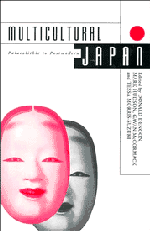Book contents
- Frontmatter
- Contents
- List of Figures and Tables
- List of Contributors
- Abbreviations
- Introduction
- Part 1 Archaeology and Identity
- Part 2 Centre and Periphery
- Part 3 Contact with the Outside
- 8 Some Reflections on Identity Formation in East Asia in the Sixteenth and Seventeenth Centuries
- 9 Siam and Japan in Pre-Modern Times: a note on mutual images
- 10 Indonesia under the ‘Greater East Asia Co-Prosperity Sphere’
- 11 Japanese Army Internment Policies for Enemy Civilians during the Asia-Pacific War
- Part 4 The Japanese Family
- Part 5 Culture and Ideology
- Afterword: Diversity and Identity in the Twenty-First Century
- Index
11 - Japanese Army Internment Policies for Enemy Civilians during the Asia-Pacific War
Published online by Cambridge University Press: 05 November 2011
- Frontmatter
- Contents
- List of Figures and Tables
- List of Contributors
- Abbreviations
- Introduction
- Part 1 Archaeology and Identity
- Part 2 Centre and Periphery
- Part 3 Contact with the Outside
- 8 Some Reflections on Identity Formation in East Asia in the Sixteenth and Seventeenth Centuries
- 9 Siam and Japan in Pre-Modern Times: a note on mutual images
- 10 Indonesia under the ‘Greater East Asia Co-Prosperity Sphere’
- 11 Japanese Army Internment Policies for Enemy Civilians during the Asia-Pacific War
- Part 4 The Japanese Family
- Part 5 Culture and Ideology
- Afterword: Diversity and Identity in the Twenty-First Century
- Index
Summary
Introduction
Above Semarang in central Java, as the aeroplane prepares for landing and loses altitude, orderly rows of white crosses set in a green lawn come into view. Adjacent to the airport there lies a large cemetery, the resting place of the Dutch people who died in Java during the Pacific War. I visited this cemetery, Kalibanten, in August 1992 and August 1994.
Large and small crosses are arranged in a step formation around a large central cross. The children's crosses are smaller, while those of the women are rounded off at the edges like flower petals. To each of the graves of Jewish people the Star of David is affixed. Into each of the Islamic grave markers is engraved a small circle. There are about three thousand of these graves here, and reading the names and dates engraved on the white markers I find that there are many who died in the years 1944 and 1945; also that many of these were children and elderly people.
In the western corner of the cemetery the statues of two women stand facing each other, against the background of the airport. The statue on the left stands head cast down, as if in great sadness. The face of the other statue is severe, even angry, and she rests her hand on the shoulder of the other woman, seeming to stare into the distance. Between them stand the statues of two children, hands linked.
- Type
- Chapter
- Information
- Multicultural JapanPalaeolithic to Postmodern, pp. 174 - 210Publisher: Cambridge University PressPrint publication year: 1996



